Score a point for the city planners: their new landscaping at the Stanford Heights Reservoir, in the San Francisco neighborhood of Miraloma Park uses locally appropriate native plants in simple bold strokes of panache. The design is a triumph of simplicity.
We are so frequently dismayed by the busy, overwrought planting plans brought forth by cookie-cutter “native plant designers” taking the wildlands as their only inspiration, who employ a hodgepodge of (too) many plant species because “that’s how it looks in nature.”
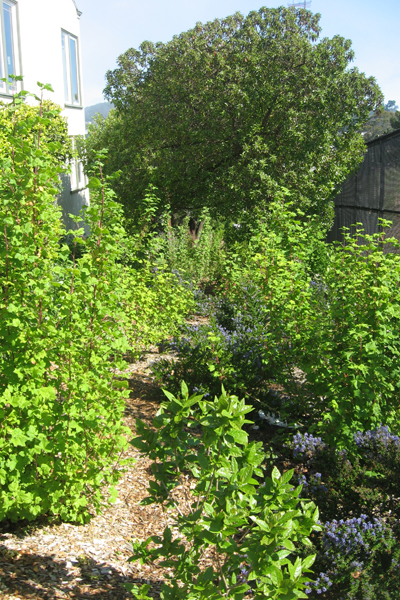
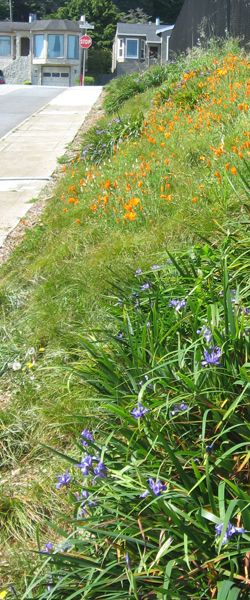
Here, the design chooses two beautiful species as a foundation for all the plantings adjacent to sidewalks: Carex pansa and Pacific Coast Iris.
The Pacific Dune Sedge (Carex pansa) looks like a meadow grass, and it spreads underground by rhizomes like running bamboo. It grows well in heavy soil (though it prefers sand) and can tolerate sun, drought, and the traffic of dogs.
The iris is gorgeous and locally authentic; Its blue flower and long pointed leaf may be as emblematic of San Francisco as any plant I know.
Together they bind the perimeter of the reservoir with sustainability and beauty. Water-wise, insect-friendly, pleasing to the eye, and mostly self-sufficient — what more can you ask?
The plan also called for sowing seed of blue-eyed grass (which didn’t come up) and California poppy (which did). Count my vote a yawn. Haven’t we had enough poppies? So many other local and lovely annual wildflowers to choose from — anybody for Clarkia? Collinsia? Lasthenia? Limnanthes? Anybody?
Another quibble: the footpath between Rockdale and Agua on the western edge of the reservoir has been badly overplanted, albeit with a wide selection of wonderful native shrubs. Go there to see Ceanothus, Ribes, Redbud, Spicebush, Twinberry, and more (pictured left) …. but don’t expect the footpath to remain passable much longer. Each of these shrubs will grow to be 8-10 feet wide or more, and they are planted together on 3-foot centers. Was the intention to close off the footpath to all human traffic? That will be the effect.
Two of these shrubs bloomed especially well this year:
Ribes sanguineum var. glutinosum, a deciduous 12-foot shrub also known as flowering current, produces bushels of long pink-and-while flower tassels from bare branches in February, then leafs out fully in early spring. It grows well in sun or shade and can withstand both garden water and the total drought of “benign neglect” — a good shrub to know for any gardener interested in native plants.
Ceanothus or California Lilac, another emblematic plant (it occurs natively only in CA) is a sun-loving drought-tolerant evergreen whose genus contains over 70 species from groundcover to tree; this one appears to be the cultivar ‘Dark Star,’ which is a 6-foot shrub covered with brilliant blue blossoms in spring, plus an occasional bonus bloom in fall. The flowers look like small fluffy pinecones and are frequently ravished by bumblebees.
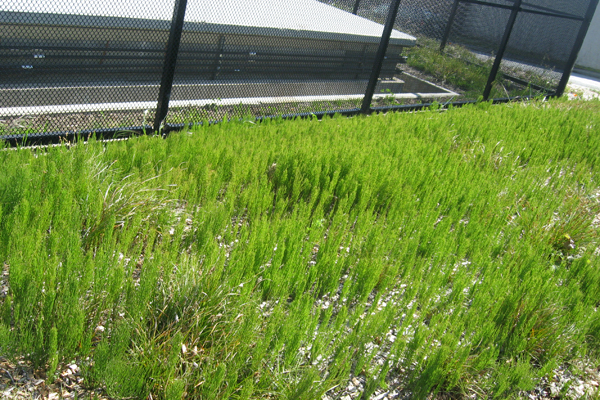
Meanwhile, out on the eastern margins of the reservoir where the underground river runs, we find an interesting native plant not specified in the plans at all. The horsetail (Equisetum arvense) growing at the top and bottom corners of Isola St. are part of an existing native population that runs like a green ribbon along the high water table from here all the way straight uphill to the north-facing slope of Mount Davidson. Horsetail is an ancient plant (from the Carboniferous Period of the Paleozoic Era) and it can be highly invasive, especially outside of its native range; but in this context, it belongs here. Horsetail always indicates the presence of abundant groundwater — looks like there was a reason they built the reservoir here.
Following are a few more pictures taken on a recent walk around the reservoir:
Nice patch of Iris, Carex, and poppy on Agua St.
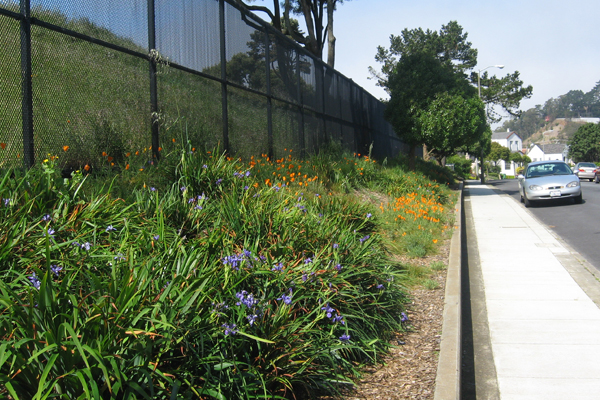
At the corner of Agua, Teresita, and Isola: robust populations of the Carex and Iris looking fine. Notice the tangled mess of annual weedy grasses on the other side of the fence.
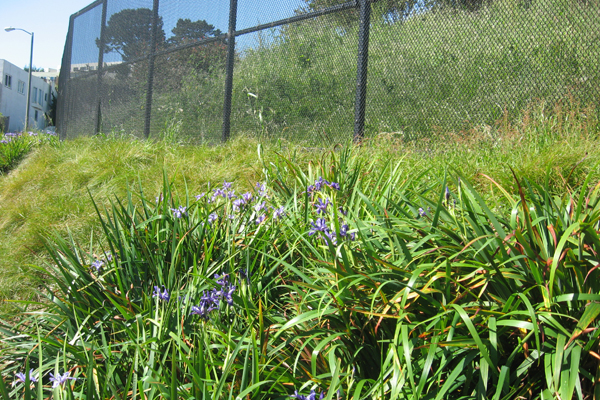
To be clear: the choice of Carex pansa and Pacific Coast Iris as foundation plantings should be celebrated. This is a winning combination.
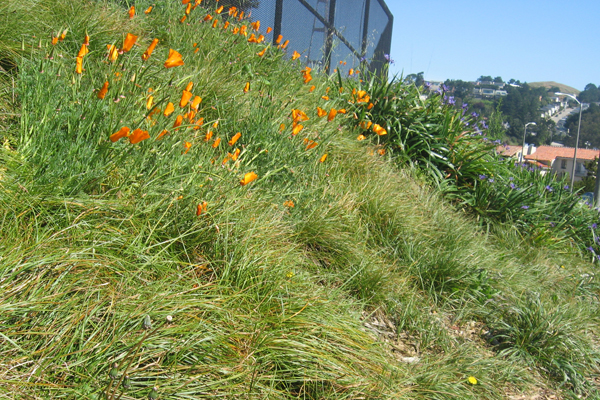

Madroño president Geoffrey Coffey started the company in 2005 out of the back of a pickup truck. His garden column, “Locals Only”, first appeared in the San Francisco Chronicle in 2002. He lives in San Francisco with his wife and two children, where he also sings and thumps the bass for Rare Device.


